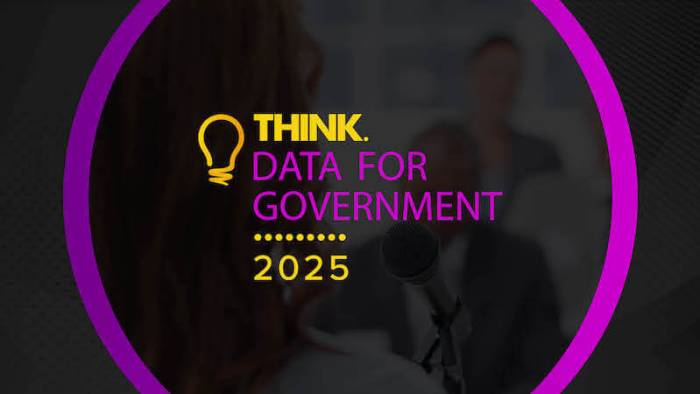Public sector organisations are experimenting with agentic and conversational AI, but digital leaders have warned that the technology’s real promise will only be realised if they can work together on common standards, transparent governance and citizen-centred design.
In a discussion at Think Digital Government, digital and data experts (pictured) discussed both the opportunities and pitfalls of deploying AI across local government, nonprofits and frontline public services.

For councils in particular, the shift enables a far more detailed understanding of resident needs.
“We’ve got a real opportunity to engage with them in a way that we haven’t been able to before,” said Julian Patmore, service director, digital & customer access at Peterborough City Council. He described how transcription tools and conversational analytics are helping councils understand why people make contact and what outcomes they need. “We can now do the common data to understand what these pinch points are,” he said.
This capability, he argued, can help break down the long-standing departmental silos that often confuse residents: “As a resident of the council, where do I go to get the service that I need? I don’t know how the council is structured – I don’t care about different departments. I just want the services.”
Patmore said this aligns closely with a wider vision many authorities now follow: “Digital where possible, but human where it matters.”
Incremental Transformation, Not ‘Big Bang’
While enthusiasm for AI is widespread, panellists stressed that transformation will not, and should not, always be delivered through major programmes.
“Transformation using AI doesn’t need to be an enormous project,” said Kris Burtwistle, head of UK local government and not for profits at AWS. Instead, he said, organisations should look for “ways we can iterate things really incrementally… maybe automate a pathway into a particular service as a first thing, prove success, and then look at the next service.”
Small wins can help justify investment, build evidence and reduce risk, he added.
Rising Demand For Cross-Sector Collaboration
The need for consistent, shared approaches ran through the discussion.
“All of us are going through the same challenge around what AI means as an organisation,” said Patmore. For the first time, he added, councils are “speaking to each other and wanting to learn from each other.”
If you liked this content…
He argued for a common local-government framework to avoid every council commissioning its own set of agents: “We can actually get that in a uniform way… let’s use a common orchestrator and a common set of agents.”
Burtwistle agreed: “Local authorities have the same statutory responsibilities. If something works in one place, it stands to reason it should work somewhere else too.”
Open-source tooling, convening groups of customers and publishing shared code via platforms such as GitHub were all highlighted as essential mechanisms for scaling innovation.
Building Trust Through Transparency And Governance
Trust also remains a critical hurdle – not because AI is inherently unreliable, but because expectations differ sharply from human interactions.
“We expect more from AI than we do from human. If a human makes a mistake, it’s fine. But as soon as AI makes a mistake, it’s a catastrophe,” said Patmore.
He argued that improved data visibility means errors can now be identified and corrected faster than with human-only services: “We can fix those quicker than we could beforehand.”
Removing Barriers
Suppliers also have a role in reducing fragmentation, particularly where legacy systems restrict access.
Traditionally, Patmore noted, councils were told: “If you want to do that, then you have to buy this tool.” AI-driven approaches now allow more flexible integration – but only if vendors cooperate. “You need to be more open. Join the party… it benefits them as well as us.”
Burtwistle said suppliers can help by creating spaces for shared learning and co-creating tools that are easy for others to redeploy. “There probably isn’t a really easy answer beyond willingness to support that effort,” he said.
But despite AI’s technical complexity, panellists said the fundamentals of service design remain unchanged.
And at its core, Patmore said, good service design still relies on conversation: getting people into a room, cutting through jargon, and finding common ground. “Services know what they want to deliver… but it’s not until you actually get in the room and start having proper conversations that you get to that common language.”








